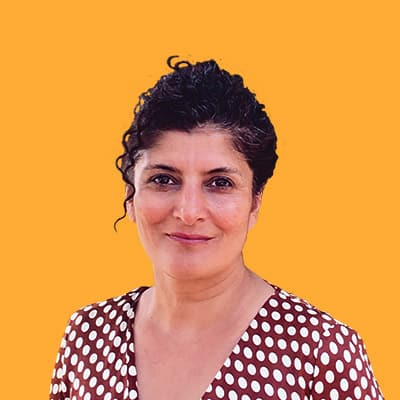In today’s fast-paced world, there’s an increasing tendency to avoid psychological and emotional pain, as evidenced by the rising use of anti-depressants, anti-anxiety, and other psychotropic medications.
However, it’s essential to recognize that developing psychological resilience is key to a mentally healthy society. But how do we build this resilience? Let’s explore some key insights, illustrated by real stories of resilience from war and trauma.
Have you ever noticed how some people who have faced incredible adversity seem to carry an inner light? They might have lost so much, but it’s as if they’ve gained something intangible yet profound.
Viktor Frankl, a Holocaust survivor and psychiatrist, is a perfect example. In the horrific conditions of Nazi concentration camps, Frankl found meaning and purpose. His experience, documented in Man’s Search for Meaning, highlights how profound suffering can lead to personal growth and resilience. As Frankl said:
“When we are no longer able to change a situation, we are challenged to change ourselves.”
This suggests that enduring hardship can ignite latent qualities such as initiative, courage, and ingenuity.
Take Malala Yousafzai, for instance. In 2012, this Pakistani schoolgirl was shot in the head by the Taliban for advocating girls’ education. Despite this life-threatening attack, Malala survived and continued her activism with even greater determination. Her recovery and subsequent global campaign for education symbolize the power of resilience. As she famously declared:
“One child, one teacher, one book, one pen can change the world.”
Malala’s journey from a hospital bed to the Nobel Peace Prize stage exemplifies how courage and a strong sense of purpose can transform trauma into a force for positive change.
Back in the 1950s, researchers like Dr. Emmy Werner began to study children from troubled backgrounds, identifying those who thrived despite their circumstances. These resilient kids were dubbed ‘vulnerable but invincible’. Thriving children often had an affectionate temperament and connected strongly with supportive family members or community role models.
Consider J.K. Rowling, the author of the Harry Potter series. She faced significant hardships, including poverty and single motherhood. Rowling found resilience through her passion for writing and the support of her close friends and family, eventually achieving tremendous success. As she once reflected:
“Rock bottom became the solid foundation on which I rebuilt my life.”
This shows us that resilience is not solely inherent; it develops through positive connections with others.
Fast forward to today, and we see resilience as a dynamic interplay between individuals and their environments. It’s about self-efficacy, confidence, and adaptive coping strategies. Nelson Mandela, after spending 27 years in prison, emerged with a focus on reconciliation and nation-building in South Africa. His resilience was bolstered by his inner strength and the support of his fellow anti-apartheid activists. Mandela’s words:
“The greatest glory in living lies not in never falling, but in rising every time we fall” …
… encapsulate the essence of resilience. It’s a continuous process of adapting and thriving, involving flexible, adaptive responses rather than heroic acts.
Dr. Laurie Leitch brings an interesting perspective, suggesting that resilience isn’t just for crises. It’s the capacity to be creative and adaptive during both stable and disruptive times. This approach reframes resilience as a skill to be honed daily. Fredrick Douglass, a former slave who became a leading abolitionist, showcased everyday resilience by continuously advocating for civil rights despite facing constant threats and violence. His ability to adapt and use his experiences to fuel his activism exemplifies everyday resilience. Training ourselves to handle everyday challenges creatively prepares us for larger problems effectively.
Who doesn’t love a good hero story? Think of Luke Skywalker, who learns resilience by trusting his inner voice and gaining confidence in his abilities. Developing resilience involves building self-efficacy, focusing attention, overcoming self-doubt, and learning from past experiences.
Bethany Hamilton, a professional surfer who lost her arm in a shark attack, demonstrated resilience by returning to competitive surfing. Her story, captured in the film Soul Surfer, shows how focusing on her passion and setting goals helped her overcome immense physical and emotional challenges. There are no fixed steps, but a set of linked skills and capacities that collectively enhance resilience.
Researchers like Dr. Michael Unger advocate for an ecological approach, considering the interconnectedness of individuals and their communities. Building resilience involves working with the broader community to create supportive systems, such as engaging with parents, schools, and local organizations.
The community response in Christchurch, New Zealand, following the devastating 2011 earthquake, demonstrated an ecological approach to resilience. Local initiatives, support groups, and community rebuilding efforts played a crucial role in the city’s recovery and resilience. Resilience is a connected system of strategies that involve collective effort and community engagement.
Building resilience is a multifaceted process involving personal traits, supportive relationships, and community engagement. It’s not just about individual strength but about creating a supportive environment that fosters resilience collectively. By integrating everyday practices and fostering community support, we can enhance our capacity to bounce back from adversity.
Stories like those of Malala Yousafzai, Viktor Frankl, and Nelson Mandela illustrate the profound impact of resilience, showing that even in the face of grave danger, one can emerge stronger and drive meaningful change. So, let’s take these lessons to heart and build a more resilient society, one step at a time. As Helen Keller wisely said:
“Although the world is full of suffering, it is also full of the overcoming of it.”
By Farah Naz
|| features@algarveresident.com
Farah Naz is a UK trained psychotherapist of more than 30 years and is a Clinical Hypnotherapist. She has worked with thousands of people globally for a range of issues. Farah has trained doctors, teachers and health workers on stress management. Currently, she has an online international practice and a private practice in the Algarve. www.iamfarah.com email: info@iamfarah.com




















